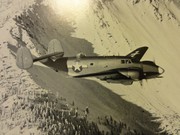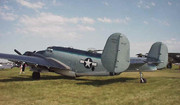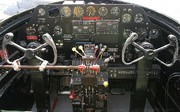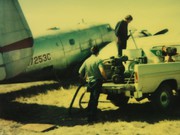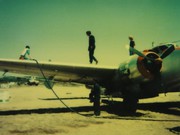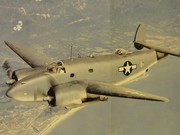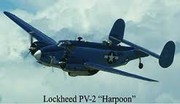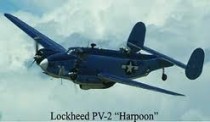Lockheed PV-2
The Lockheed Company's early success in WWII with their Hudson bomber (a derivative of their Model 14 Super Electra used by the Royal Air Force) led them to propose a specialized bomber and reconnaissance version of their Model 18 Lodestar. Lockheed designated the new prototype the Model 37, and after a brief trial period, the RAF ordered a total of 675 of them, calling the new aircraft the Ventura.
In June 1943, the Navy ordered a long-range, slightly-redesigned version, and this version became the PV-2 Harpoon. At least 2,100 navalized Venturas and Harpoons were delivered before the end of the war, and the total number of deliveries to all customers exceeded 3,000.
Specification of Lockheed PV-2 Harpoon:
Engines: Two Pratt & Whitney R-2800-31 air-cooled radial engines rated at 2000 hp for takeoff, 1600 hp at 11,900 feet. Maximum speed 282 mph at 13,700 feet, 271 mph at sea level. Cruising speed 171 mph. Landing speed 83 mph. Initial climb rate 1630 feet per minute. Service ceiling 23,900 feet. Dimensions: Wingspan 75 feet 0 inches, length 52 feet 1 inches, height 13 feet 3 inches, wing area 686 square feet. Weights: 21,028 pounds empty, 33,668 pounds loaded, 36,000 pounds maximum.


